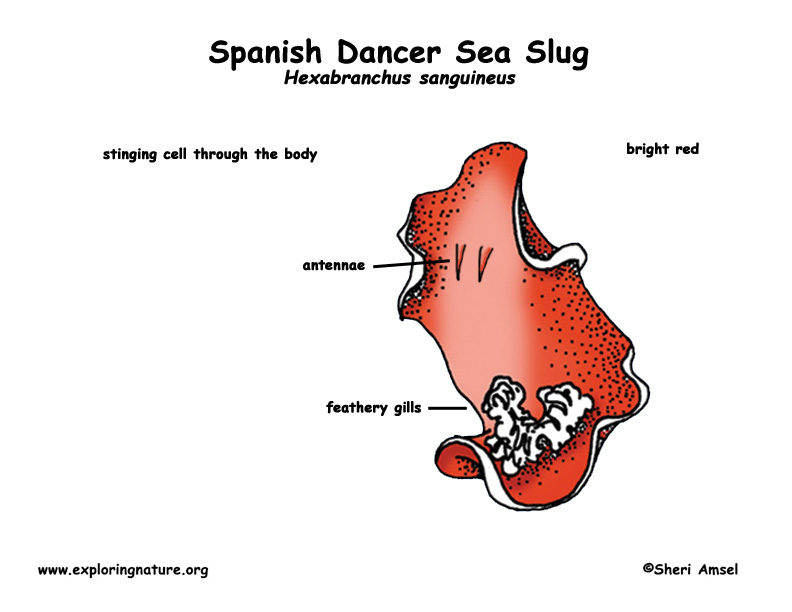

Sea slugs are found throughout the world's oceans. There many species of sea slug. The Spanish Dancer is found in the tropical Indo-Pacific Ocean and the Red Sea.
Sea slugs live mostly in warm, tropical waters on the ocean floor. They are rarely found in cooler waters and are rarely swimming in open water.
There are many different kinds of sea slugs, all with different bright colors and patterns. Though they are in the same family as snails, they have little or no shell. They are poisonous and very few animals will eat them. The Spanish Dancer is one of the largest sea slugs reaching 15 inches long (40 cm). They are bight red and their swimming motion looks like the waving skirts of a Spanish Dancer.
When threatened by predators, they shoot out an inky, acid spray to scare them off. Only crabs and lobsters can eat them.
They eat animals (carnivores) like sponges, anemones, corals, and barnacles.
They have both male and female organs so can mate with any sea slug of their species that they meet. They lay their eggs in masses on or near an animal they eat for hatching young to have a first meal.
Domain: Eukarya
Kingdom: Animalia
Phylum: Mollusca
Subphylum: --
Class: Gastropoda
Order: Cephalaspidea
Suborder: --
Superfamily: Doridoidea
Family: Hexabranchidae
Genus: Hexabranchus
Species: H. sanguineus
When you research information you must cite the reference. Citing for websites is different from citing from books, magazines and periodicals. The style of citing shown here is from the MLA Style Citations (Modern Language Association).
When citing a WEBSITE the general format is as follows.
Author Last Name, First Name(s). "Title: Subtitle of Part of Web Page, if appropriate." Title: Subtitle: Section of Page if appropriate. Sponsoring/Publishing Agency, If Given. Additional significant descriptive information. Date of Electronic Publication or other Date, such as Last Updated. Day Month Year of access < URL >.
Amsel, Sheri. "Sea Slug (Spanish Dancer)" Exploring Nature Educational Resource ©2005-2024. December 13, 2024
< http://www.exploringnature.org/db/view/Sea-Slug-Spanish-Dancer >

